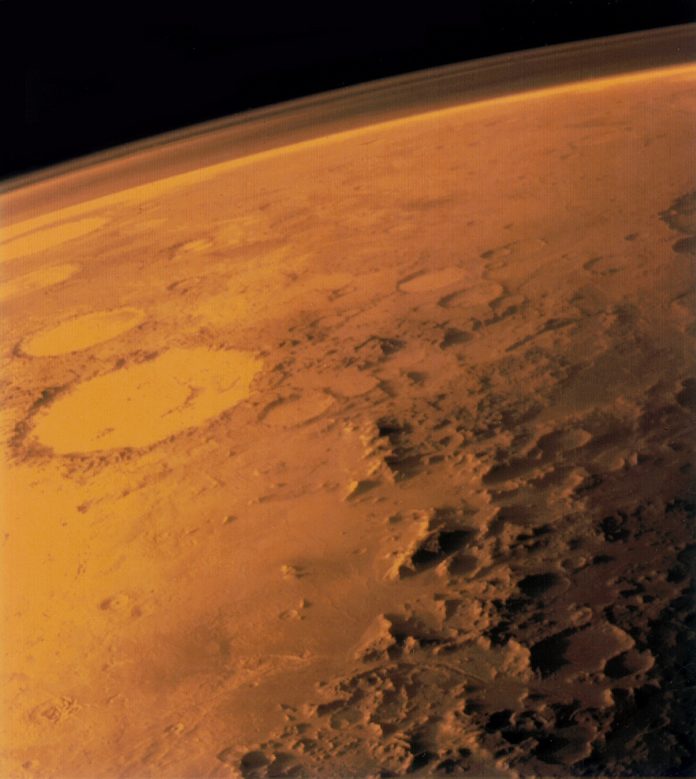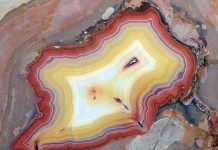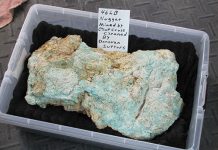
By Jim Brace-Thompson
Researchers say that billions of years ago Mars was a lot more like our blue planet Earth in that it contained oceans, lakes, and river systems. But much of that liquid water seems to have disappeared. Left behind was the red desert planet we see today.
Recent studies suggest that water (H2O) was wafted high into the Martian atmosphere. There, H2O split into hydrogen and oxygen and drifted off into space. Thus, we have a cold and arid Mars prone to seasonally violent, planet-wide dust storms. Such regionalized storms in desert regions on Earth pale by comparison.
But, hold off! That liquid water may still reside on Mars after all.
Volumes of water on the scale of oceans may be stored and sequestered within the Martian crust. So says a research team led by E.L. Scheller (Division of Geological & Planetary Sciences, Caifornia Institute of Technology) in a recent issue of the journal Science. Scheller’s team says that “between 30 and 99% of martian water was sequestered through crustal hydration.”
Crustal what?
Scheller’s team argue that hydrated minerals residing in the crust of Mars “is possibly the largest sink of Mars’ missing ancient water,” writes Hiroyuki Kurokawa of the Tokyo Institute of Technology. Current scientific thought suggests martian water drifted off into space, but results of instruments aboard MAVEN (the Mars Atmosphere & Volatile EvoluntioN) spacecraft indicate that the current volume of water removed by this mechanism is far too small to account for the disappearance of the ancient water volume that scientists have estimated once resided on the planet’s surface.
This has led some scientists to suggest that the “missing” water is contained within as-yet undiscovered underground frozen reservoirs. But, says Scheller’s team, all that missing water may well be contained as hydrated minerals like smectite, which have been observed by Mars satellite missions. Per Scheller’s team, there is no need to seek “hypothetical missing reservoirs.” The missing water is all locked up in surface minerals via “crust hydration.”
Author: Jim Brace-Thompson
 Jim began and oversees the AFMS Badge Program for kids, has been inducted into the National Rockhound & Lapidary Hall of Fame within their Education Category, and is the president-elect for the American Federation of Mineralogical Societies.
Jim began and oversees the AFMS Badge Program for kids, has been inducted into the National Rockhound & Lapidary Hall of Fame within their Education Category, and is the president-elect for the American Federation of Mineralogical Societies.
Contact him at jbraceth@roadrunner.com.
If you enjoyed what you’ve read here we invite you to consider signing up for the FREE Rock & Gem weekly newsletter. Learn more>>>
In addition, we invite you to consider subscribing to Rock & Gem magazine. The cost for a one-year U.S. subscription (12 issues) is $29.95. Learn more >>>















